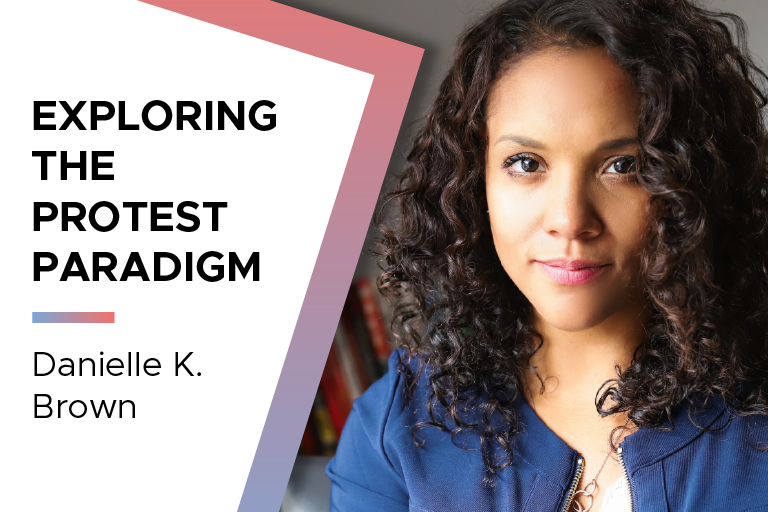Societal change is driven by organized protest. Demonstrators plan their actions to convey a certain message in hopes of producing a desired outcome. They often rely on the media to amplify that message. However, as information gatekeepers, journalists make decisions about how to portray organized protests…and their actions influence the mindset of their audiences.
Danielle K. Brown, Ph.D., the 1855 Professor of Community and Urban Journalism, is the founding director of the LIFT Project. The project researches how news media inform communities and encourage them to engage as informed citizens. Brown studies trends involving media coverage of demonstrations. She recently shared her thoughts in an article originally published in The Conversation.
Story adapted from an article originally shared on MSU Today.
“Protests — from small silent sit-ins and mass marches to the current student-led encampments — share similar components,” Brown said. “They require a degree of planning, focus on a perceived injustice and seek reforms or solutions. Protests also, by their very nature, engage in varying degrees of disruptive actions that exist in confrontation with something or someone and utilize strategies that attract the attention of news media and others.”
Brown said there are core elements present in nearly all protests: grievances, demands, disruption, confrontation and spectacle.
“But to the media, some elements are more newsworthy than others, with confrontation and spectacle often topping the list,” she said. “As a result, these elements tend to be covered more often than others.”
Brown has studied social movements such as Black Lives Matter and the 2017 Women’s March. She says in those cases, the media tends to focus the sensational and disruptive elements of a protest…neglecting their political substance.
“For example, analysis of the 2020 protests following the murder of George Floyd conducted with my colleague Rachel Mourão found the Associated Press and cable news headlines were more likely to focus on disruption and chaos than police violence or protester demands,” Brown said.
Brown says the media’s tendency to portray even peaceful demonstrations as violent or disruptive is known as the protest paradigm. She says factors such as the timing of stories and the location of a news organization can alter the paradigm. She says instead of focusing on grievances, the media focuses on confrontations between protestors and police.
“Movements that seek to disrupt the status quo are the most likely to receive initial coverage that frames protesters as criminal, irrelevant, trivial or illegitimate components of the political system,” said Brown.
Brown notes there are some exceptions to the protest paradigm.
“In the research examining news coverage after the murder of George Floyd, we found that when reports in major news outlets deviate from the protest paradigm, it was often in work produced by journalists who have engaged deeply and frequently with a community,” she said. “In the current campus protests, it is student journalism that has emerged as an outlier in this respect.”
Brown points out that economics often drive newsroom decisions, quoting the old journalism adage, “if it bleeds, it leads.” This is reflected, she said, in recent coverage of campus protests that centered on “chaos, clashes and arrests.” Brown adds journalists tend to quote officials in positions of power or status because they may have already established working relationships with them or their media relations teams. Brown suggests this puts protestors at a disadvantage when soliciting the media’s attention.
“And in the case of campus protests in particular, reporters have faced difficulty connecting with protest participants directly,” Brown said.
By: Kevin Lavery
